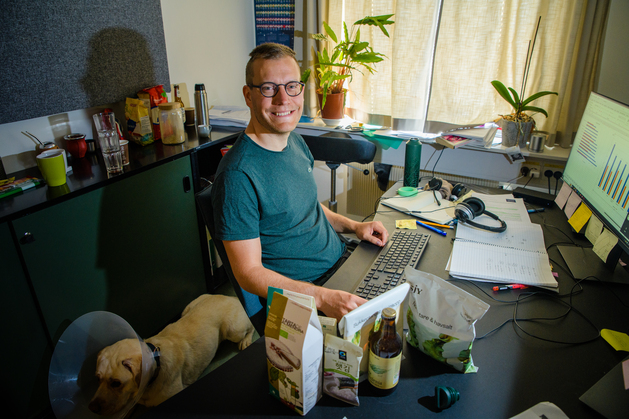Health and the environment tempt more people to eat kelp

How is it possible to get more people to eat kelp? Health and the environment are the two best arguments.
It is not because it tastes good, and it is not because it is easy to find in the stores. No, the way to get more people to eat seaweed and kelp is that they believe it is healthy and sustainable.
Influences
“My goal is not to convince people. It is to understand what influences them”, says Florent Govaerts. He is a scientist at Nofima in Tromsø. He has just completed his PhD on people’s views about eating green produce from the ocean.
“We have been looking at what influences consumers in Norway and in the UK. The factor that makes people most want to eat seaweed and kelp is that they believe it is good for their health”, he says.
In second place comes the environment:
“The other very important factor is that people feel they have a responsibility to eat seaweed and kelp because it is sustainable and environmentally friendly. This really influences our intentions. Therefore, we also see that those who have environmentally friendly and sustainable values are more positive about buying seaweed and kelp than those who see other values as being more important”, says Govaerts.
Hard to find
The problem is that it is difficult to find seaweed and kelp products in stores. Moreover, it is difficult to sell it based on its good taste:
“Many people associate food with good taste and buy the products they think are good. The problem with seaweed and kelp is that no one has associations with the taste”, says the Nofima scientist. Most people simply don’t know what seaweed and kelp taste like.
In addition, the products are difficult to get hold of. At least in the major supermarket chains. “Here in Tromsø, there are international stores with produce from Asia, but if you want to buy kelp from Norway or if you don’t live in a big city, it is very difficult”, he says.
People think it smells bad
There is also a lack of knowledge about what kelp really is. For example, many people do not know that the nori sheets used in sushi are a kelp product.
Another prejudice is that seaweed and kelp smell bad. Those who have taken a stroll along the shore and smelled the stuff that has washed ashore and is lying there rotting have noticed the smell – not the fresh, salty smell of kelp that has been gathered to eat.
“In addition, people think it is expensive. Or rather: They believe it is expensive”, says Florent Govaerts about his research.
Must communicate
His advice to the seafood industry is to provide a lot of good information. “Those who want us to eat kelp must go out to the media and try to tell us that this is a healthy product that contains a lot of vitamins, minerals and fibre. It is environmentally friendly – you don’t need pesticides or fertilisers. Firstly, it is important to get the message out to people that it is healthy and environmentally friendly, and then that it can taste good. The problem really is that people have so little knowledge”, he says.
Florent Govaerts does not conduct research on the products themselves, but he sees they are lacking information. “We have to provide information first, but at the same time we need to put some good products on the market. There doesn’t have to be many at first, but a few that everyone likes and knows are healthy”, he says.
Other scientists are working to make the nutritional content of kelp products even better for humans. “For example, some kelp species contain too much iodine”, says Govaerts. “Kelp is the same as everything else: If you eat too much, there will be an imbalance. In Asia, however, many people eat seaweed on a daily basis”, he says.
“I think we have to try to learn to become just as good at making products from seaweed and kelp as they are in Asia!
Publications
Contact person
Topics
Low trophic species
